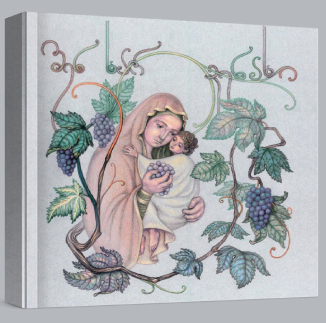About the author
John A. Graham is an American musicologist (PhD. Princeton University 2015) who specializes in the history of Georgian liturgical polyphony. His publications can be found at http://www.johnagraham.com/publications/
Karbelashvili brothers

In the nineteenth century, as Georgia was subsumed into the cultural and political arena of the expanding Russian Empire, various traditional art forms began to be forgotten amidst increasing urbanization, social upheaval, and in some cases direct suppression.
One of the most fragile of these indigenous art forms was Georgian ecclesiastical chant, the practice of singing the service texts of the Orthodox Church in three-voiced polyphony. The knowledge of these chants relied upon rigorous multi-year training with master chanters in various centers throughout Georgia, but as seminaries and other institutions became increasingly Russified in the early nineteenth century, these processes of oral transmission were broken. By the later part of the nineteenth century, only a few rural singing families such as the Karbelashvili family maintained knowledge of the more complex chant systems for the entire calendar year including the heirmoi for the celebratory feastdays such as Nativity and Pascha.

The Karbelashvili family are the most famous of the chanters that transmitted their oral tradition of polyphonic chant into written music notation at the end of the nineteenth century. The system of eastern Georgian chant preserved by the Karbelashvili brothers has direct links with the great wealth of scholastic knowledge kept by the monks of Svetitskhoveli cathedral, where Petre of Karbela (1754-1848) studied chant in the mid-eighteenth century. Of Petre’s descendents, Grigol (1812-1880) had five sons to whom he imparted his father’s chant repertory: of these Polievktos and Vasil were particularly active in promoting traditional chant through their public activism on issues of Church independence and knowledge of chant, as well as their prolific published and unpublished letters, historical treatises, and collections of notation.
Together with their three brothers Pilimon, Andria, and Petre, and other students of their father, they were successful in preserving the East Georgian chant repertory, especially the published chants for Matins-Vespers (1898), and the Divine Liturgy (1898). In 2005, the Anchiskhati Church Choir republished selections of these chants, allowing choirs around the country to renew this repertory for the first time in over a century. Hundreds of pages of additional unpublished Karbelashvili transcriptions survive in state archives, despite Soviet suppression of the performance of this music, and have only been comprehensively edited and published in recent years as part of the Georgian Chant Anthology project.
The music preserved by the Karbelashvilis is particularly beloved by the Georgian public. Various arrangements popularized by famous singing choirs such as the Rustavi Ensemble have become informal national anthems, such as the theotokion commonly sung at weddings, Shen khar venakhi (you are the vineyard). The Karbelashvili archives reveal that there were several variants of this hymn (and many others), as the oral tradition permitted and even encouraged improvisation and ornamentation of the fundamental melodic lines. These have recently been published in a separate publication called Shen khar venakhi.
The chants throughout Georgia share a fundamental melodic line, sung by the top voice part, and transmitted for centuries by master chanters. The musical differences between various regional styles occurs most noticeably in the ways that these melodic lines are harmonized into three-voices (by adding two lower voice parts), and particularly in the ornamentation practices employed by singers in each region. The East Georgian chant preserved in the Karbelashvili sources shows simple and consistent bass harmonization of the melody with intervals of a fifth or octave at important moments. The ends of phrases are almost always harmonized with a lower fifth in medial cadences and in a unison for the final cadence. The bass voice is only rarely ornamented, perhaps a connection to the predominance of bass drones in the folk polyphony of Eastern Georgia. Meanwhile, the middle voice may be extraordinarily ornamented, much more so than in the chant styles of West Georgia. In its basic form, the middle voice parallels the melody at the interval of a third below. But in the sources of Vasil Karbelashvili, in particular, we discover the possibilities for ornamenting this basic parallelism with the addition of complex passages of upper-lower neighbor note groupings, which allow also for more complex chord structures.
![Shen khar venakhi [You are the Vineyard], Vasil Karbelashvili, 1898](http://www.georgianchant.org/wp-content/uploads/2021/12/Shen-khar-venakhi-You-are-the-Vineyard-Vasil-Karbelashvili-1898-300x197.jpg)
Selected Bibliography:
Karbelashvili, Vasil. “Introduction.” Kartl-kakhuri galoba karbelaant kiloti: mts’ukhri [Kartl-kakhetian chant, karbelashvili mode: Vespers]. Part I (in Georgian and Russian). Tbilisi: Tsnobis Purtseli Press, 1897.
———. “Introduction.” Kartl-kakhuri galoba karbelaant kiloti: tsiskari [Kartl-kakhetian chant, Karbelashvili mode: Matins]. Part II (in Georgian and Russian). Tbilisi: Tsnobis Purtseli Press, 1898.
———. Assorted music manuscripts. Karbelashvili archive, No. 264. National Centre of Manuscripts, 1882-1935.
Karbelashvili, Polievktos. Kartuli saero da sasuliero kiloebi, istoriuli mimokhilva [Historical survey of Georgian secular and sacred modes]. Tbilisi, 1898.
Koridze, Pilimon. “A Few Remarks on the Historical Review of Chants and Songs by Fr. P’olievkt’os K’arbelashvili.” Archival document, housed in the Historical Archive of Georgia, “P’olievkt’os K’arbelashvili archive,” #1461-126, Tbilisi, Georgia.
Togonidze, Luarsab. Dzmebi K’arbelashvilebi [The Karbelashvili brothers] (in Georgian with English summary by John A. Graham). Tbilisi, 2012. ISBN 978-9941–0-4788-6
Jangulashvili, Svimon. “Episkopos stepane (vasil) karbelashvilis sanoto khelnatserta arkivi” [The notated manuscript archive of Bishop Stepane (Vasil) Karbelashvili]. Musikismtsodneobis Sakitkhebi: Sasuliero Musika [Issues in Musicology: Sacred Music Series], edited by Manana Andriadze et. al. (in Georgian), 81-97. Tbilisi: Tbilisi State Conservatory Press, 2007.
Graham, John A. The Transcription and Transmission of Georgian Liturgical Chant, PhD dissertation, Princeton University, 2015. Accessible as download at www.JohnAGraham.com/dissertation/








Leave a Reply